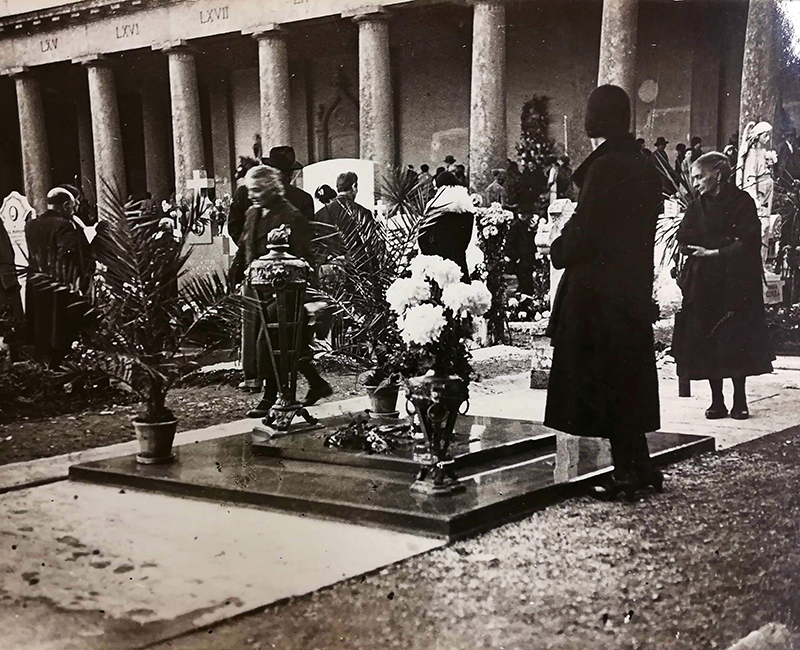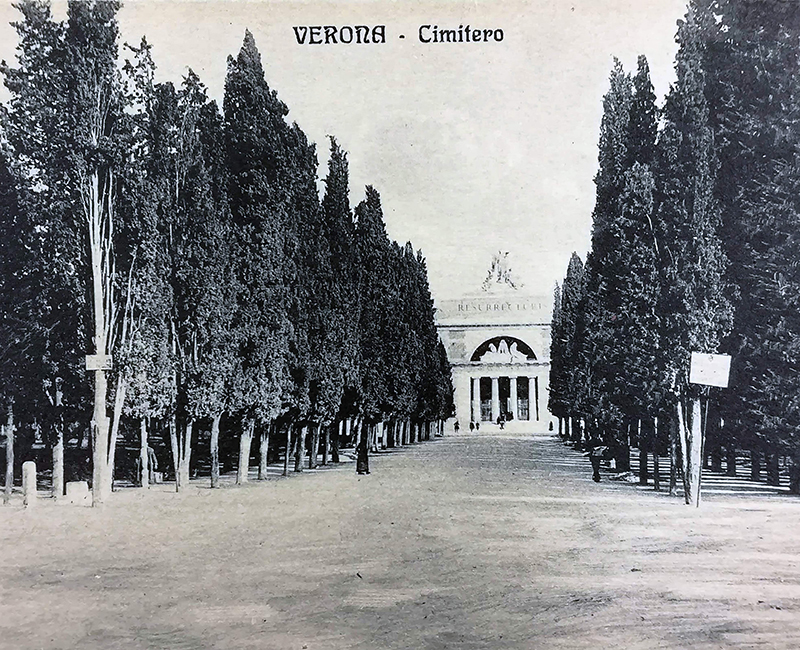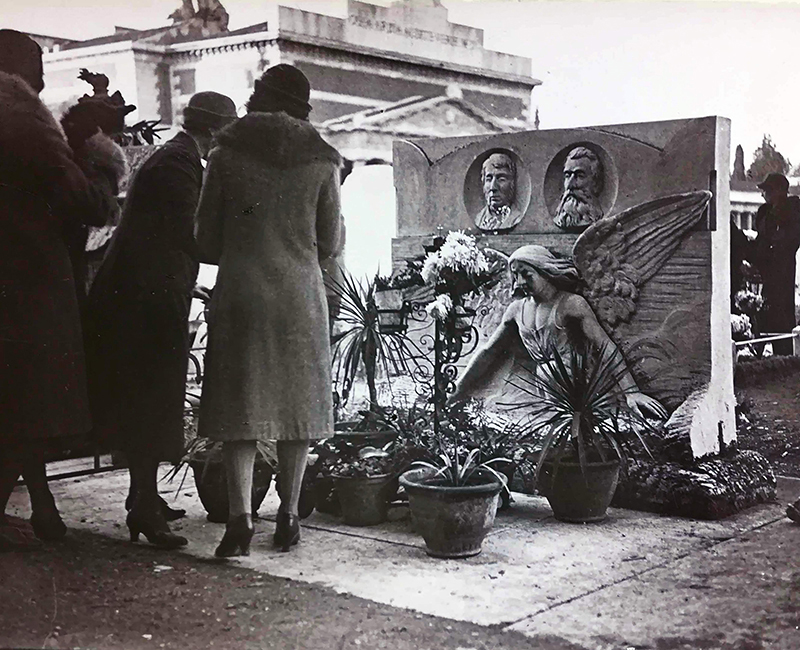Some interesting customs and curiosities related to the Monumental Cemetery Verona taken from newspapers and local chronicles of the early twentieth century.
Interesting facts
The pilgrimage
On the Day of the Dead, the crowd that went on pilgrimage to the cemetery was immense. It was mostly women who, from dawn to dusk, brought not only flowers to their dead, but also candles, torches, vases, urns and lamps. Given the large turnout, at the entrance to the cemetery, strict surveillance was carried out to prevent the introduction of indecorous objects and to prevent the risk of thefts which, it turns out, were decidedly frequent.
Funerary art
People did not always go to the cemetery to pay homage to the dead: for some, in fact, the pilgrimage on the 2nd of November was mainly a pretext to walk around and browse the most magnificent monuments, to keep up with the latest news in the artistic field, to criticise the ostentation of the rich and to laugh at the “daring lies” that were engraved on the tombs.

The church and concerts
Inside the cemetery church, there were special concerts of classical music: on May 22nd 1920, to commemorate the beginning of the First World War, the temple hosted a concert performed by the orchestra conducted by the maestro Antonio Drago who played the “Largo” of Händel and the “Canto della sera” by Schumann.
The cemetery plaza
On the cemetery plaza, there were also instances of common life: young people commissioned by the Red Cross gathered in front of the stairs to receive donations in support of the war wounded, and there were the roast chestnut vendors who were invited, out of respect, to move towards the Aleardi bridge. Nonetheless, the smell of chestnuts still came heavily into the cemetery, mingling with the intense scent of flowers.

The floral tributes
The floral tributes played a key role in the ceremonial, and the wealthy families sported the most imaginative combinations: the columns of the Monumento Dolci were wrapped in coils of white chrysanthemums, the Monumento Dolci was decorated with rocks and moss in an alpine style, while at the centre of the Cappella Miniscalchi, was a large vase filled with ornamental plants. There were, in addition, exotic plants, dark drapes and artistic vases.
The sound of the bell
The pilgrimage was punctuated by the slow tolling of the Rengo, the main bell of the Torre dei Lamberti, which those of the cemetery church and the other city basilicas echoed. In 1931, on the eve of the Day of the Dead, the bell-ringers of the cathedral performed a bell concert that infused the visitors to the cemetery and the entire city with a note of emotion and meditation.

